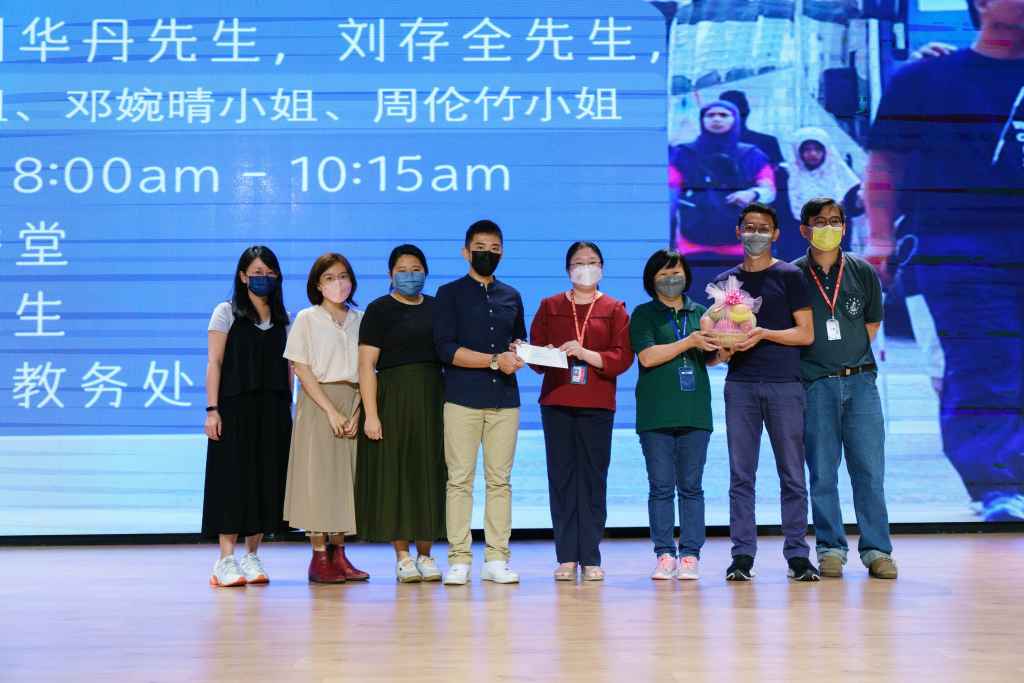Jointly reported by:
Chloe Soh Ke Er Jr3Z(6)
Chloe Chan Po Yi Jr3S(2)
Let’s talk about the blind. How much do we know about them? Well, luckily for the Junior Middle 3 students of Kuen Cheng High School, we have the golden opportunity to attend a talk about this topic. The school’s Geography teachers have graced us with this collaboration with the Malaysian Association for the Blind (MAB), located right opposite to the school, across the Klang river in Brickfields.
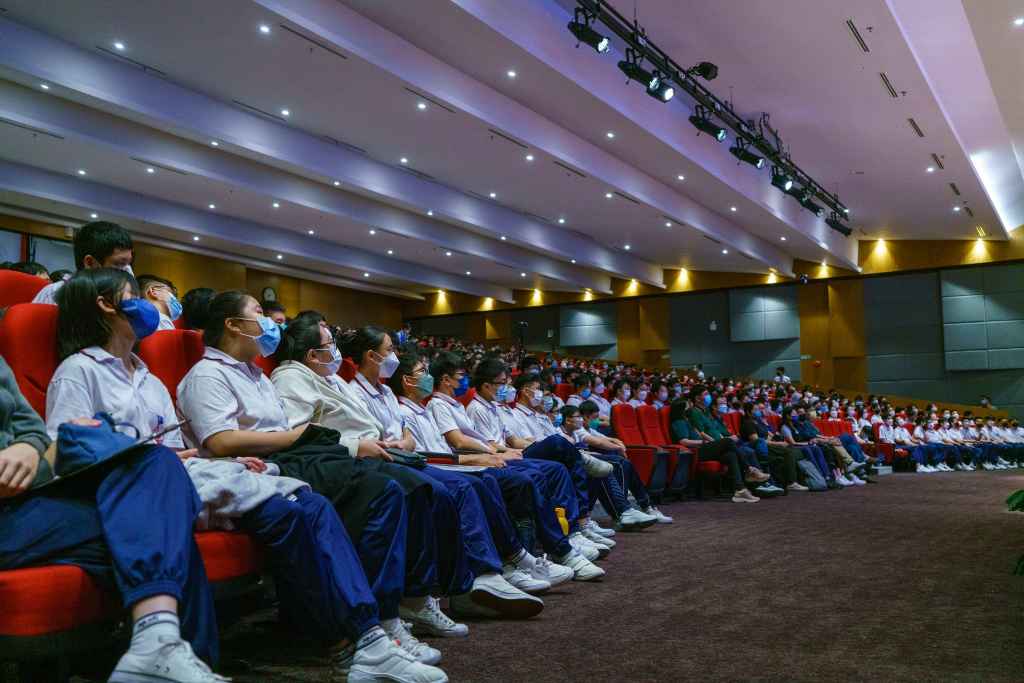
Speaking of Brickfields, what will be the first things that comes to mind? Most people would say Little India or NU Sentral. We think we know that area like the back of our hands due to the frequent visits we have. However, have we ever wondered why Brickfields is called Brickfields? The name of Brickfields originates from a year of disasters in the 1870s. The area’s infrastructure had been completely obliterated by a flood and a fire that happened. Houses were planned to be rebuilt using clay bricks. Kapitan Yap Ah Loy designated this area for the brick-making industry. A brick kiln was constructed and thus the name “Brickfields” was born.
After the introduction of Brickfields, we were presented with a documentary made in the year 2017. The film starred two blind people, Ken and Penny. It documented their daily lives as well as the hardships they faced whilst interacting with the outside world. Society back then was not as kind and welcoming compared to today. The video was beautifully produced, with raw emotions delivered by unfiltered content. It was saddening to witness the cruel side of humanity. Thankfully, the society we live in today has made changes to accommodate the needy.
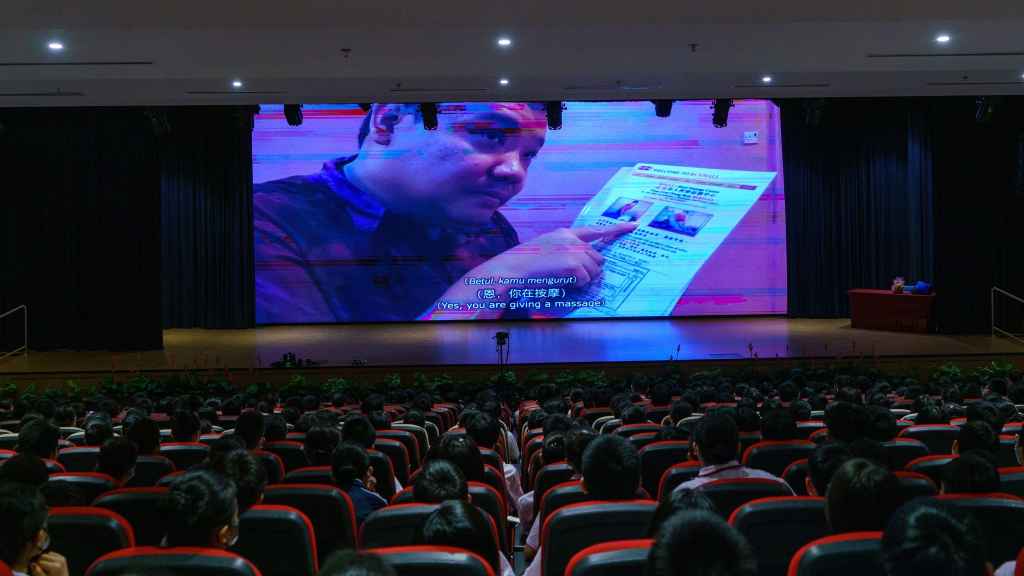
After the documentary, a small questionnaire session was held, which focused on basic knowledge of the blind and visually impaired. The eyesight of the visually impaired differs from B1 to B3, where B1 is totally blind, B2 is severely low-sighted, and B3 is slightly low-sighted. There were also questions about the daily life of the visually impaired, like they use smartphones by using the dictation function of the smartphones, they ‘watch’ movies or performances with someone dictating the scenes to them.
Next, there was a fun but meaningful game of simulating a blind person walking to buy snacks. 3 volunteers had to take turns walking to a table at an end of the stage blindfolded. There were some ‘roadblocks’ which are boxes and cones. The volunteers had to use their guide stick to detect the roadblocks and safely cross the stage. During the process, some of them couldn’t find their direction, some of them even bumped into the obstacles. When they reached the table, they couldn’t feel the correct money to give the seller. Some of them even had to find the snacks they wanted by shaking and feeling the snacks.
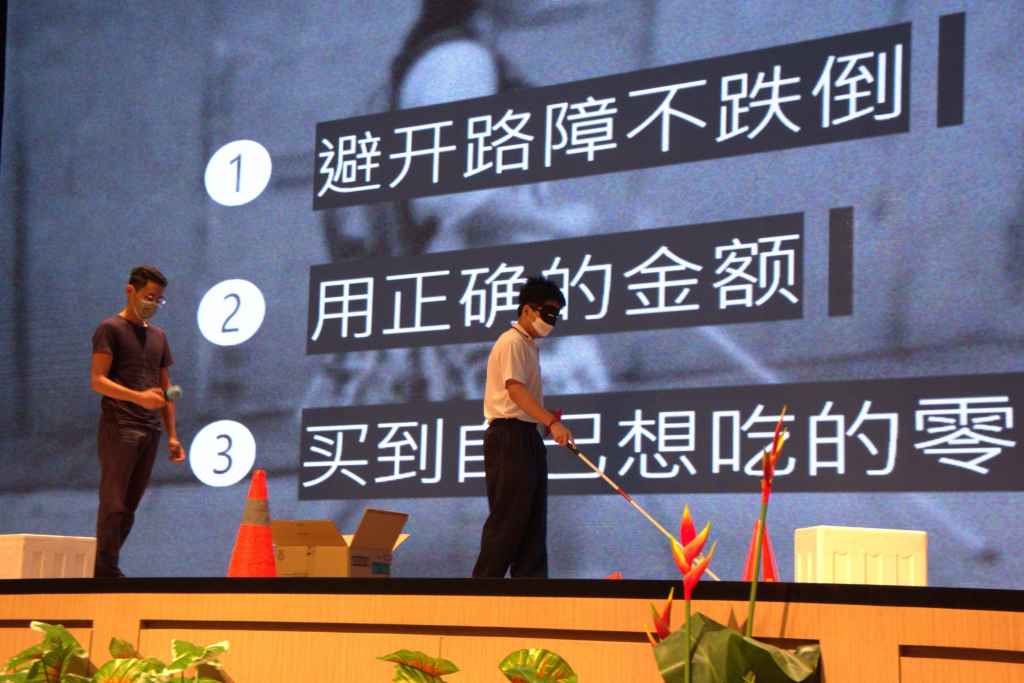
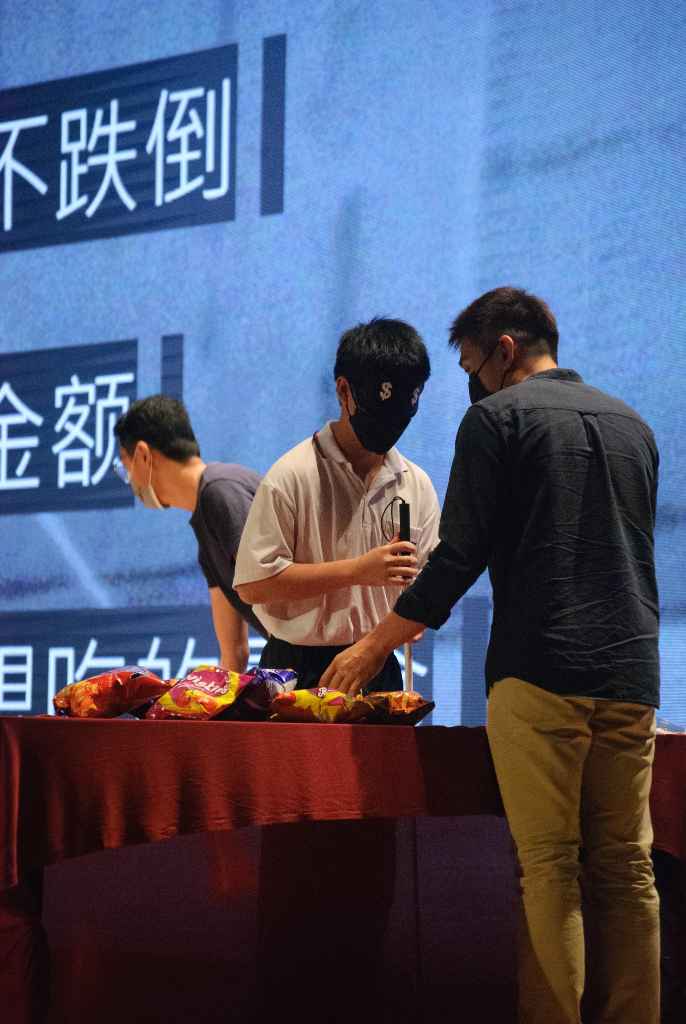
After the game, the 3 volunteers were invited to share their feelings on this game. A volunteer said that before he played the game he took a look at the course, but will still be bothered by the roadblocks, while a blind person will not even get a chance to look at the road that they will face. Another volunteer added that when they were walking in the dark, they felt uneasy and helpless, with also the laughter from the other students when the volunteers bump into the obstacles. The blind will face countless life-threatening situations, so we should tolerate them and help them with all we can.
At last, a Q&A session was held. Most of the students asked some medical questions about the blind and visually impaired. After a simple souvenir was given out to the speakers, a teacher of the Geography Department concluded that through this talk, we’ve learnt to accept the blinds’ needs and help them whenever we can. Let’s work together to create a world of colours and warmth for the visually impaired!
